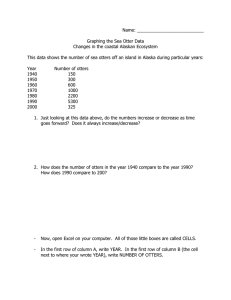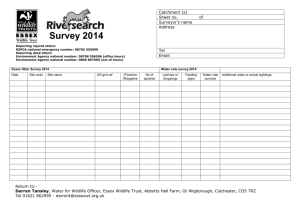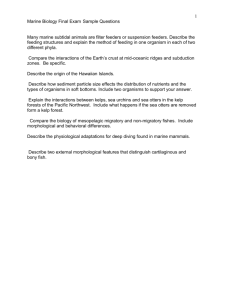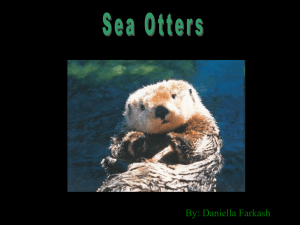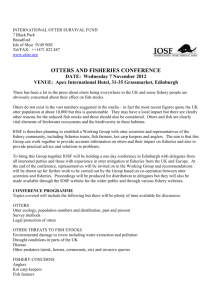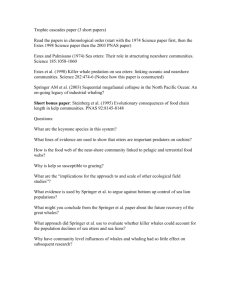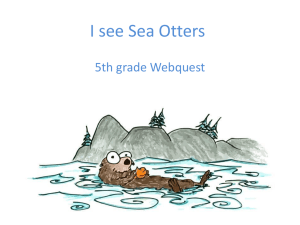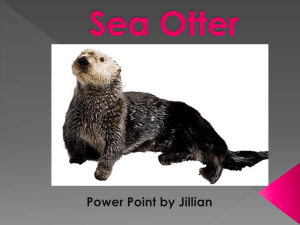The Otter Project More Than a Cute Face 3/3/2016
advertisement
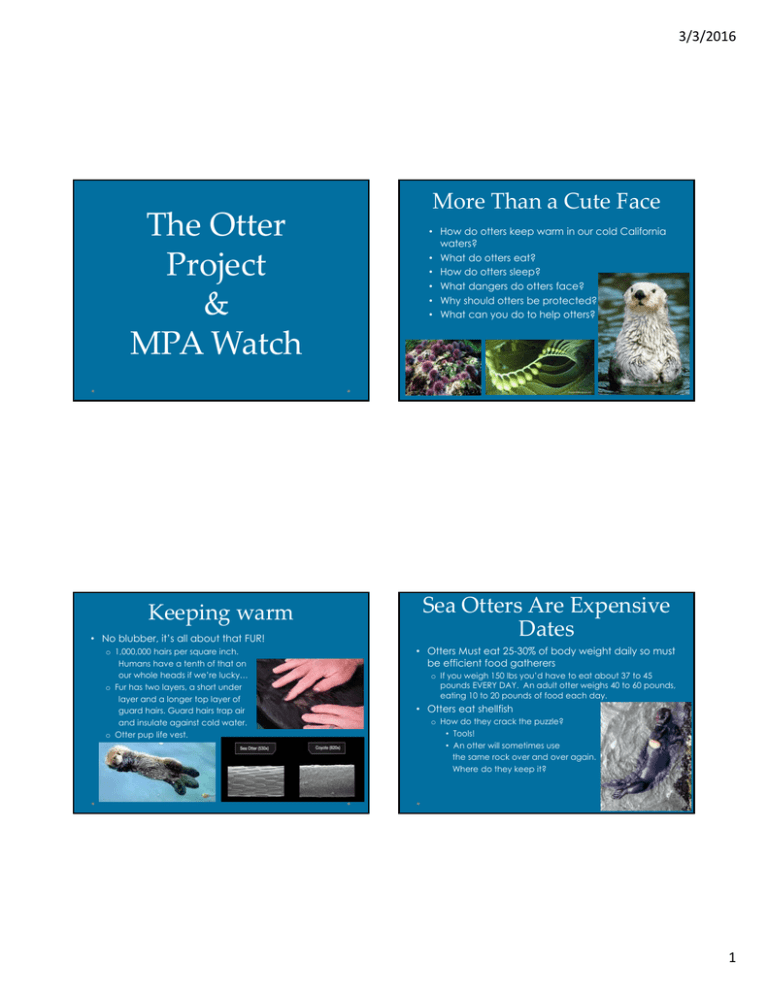
3/3/2016 The Otter Project & MPA Watch Keeping warm • No blubber, it’s all about that FUR! o 1,000,000 hairs per square inch. Humans have a tenth of that on our whole heads if we’re lucky… o Fur has two layers, a short under layer and a longer top layer of guard hairs. Guard hairs trap air and insulate against cold water. o Otter pup life vest. More Than a Cute Face • How do otters keep warm in our cold California waters? • What do otters eat? • How do otters sleep? • What dangers do otters face? • Why should otters be protected? • What can you do to help otters? Sea Otters Are Expensive Dates • Otters Must eat 25-30% of body weight daily so must be efficient food gatherers o If you weigh 150 lbs you’d have to eat about 37 to 45 pounds EVERY DAY. An adult otter weighs 40 to 60 pounds, eating 10 to 20 pounds of food each day. • Otters eat shellfish o How do they crack the puzzle? • Tools! • An otter will sometimes use the same rock over and over again. Where do they keep it? 1 3/3/2016 Sleeping in the Ocean • Cannot sleep all night, instead they take lots of naps. • When ready to nap otters sometimes wrap themselves in kelp to avoid drifting away. • Sleeping groups of otters are called rafts and can be as small as a couple otters or as large as over 100. • Never disturb a sleeping otter! Why Protect Sea Otters? • Sea otters are a keystone species o Keep marine herbivores in check o Kelp forest gardeners • Sequester carbon • Protect shoreline • Provide habitat • Sea otters are a sentinel species o Eat filter feeders • Bioaccumulate toxins What Threatens Sea Otters? Quality habitat • • Pollution o o o o Disease Domoic Acid Pesticides Parasites • Oil Spills o Could wipe out entire California sea otter population What can we do to help? • Pollution o Buy organic o Reduce, reuse, recycle, and refuse • Oil spills o Walk, bike, electric or hybrid cars, bus or trains o Ban the bag! • Over a cup of crude oil to make a single plastic bag. • Nationwide, each person uses about 250 plastic bags each year. • Use cloth bags you and conserve15 gallons of oil. • Vote • VOLUNTEER! 2 3/3/2016 The Otter Project Mission: Promote the rapid recovery of the threatened California Sea Otter through science‐ based policy and advocacy. What is the Otter Project? What are MPAs? North Central Coast North Coast I Marine Protected Areas South Coast Central Coast San Francisco Bay 3 3/3/2016 Levels of Protection • State Marine Reserve (SMR) – The most restrictive classification, these are no-take areas. • State Marine Park (SMP) – May allow recreational take, or limit in some way, but does NOT allow commercial take. • State Marine Conservation Area (SMCA) – May limit recreational and/or commercial take to protect a specific resource or habitat. Benefits of MPAs • Science proves that MPAs allow fish to thrive by protecting ecosystems, not just individual species. • Reduced human disturbance. • MPAs leave the vast majority of the coast open for fishing. • Increased biodiversity • Species can grow & reproduce • Bigger Fish • More Fish MPA Watch • MPA Watch is a citizen science program • Volunteers collect scientific data on coastal and marine resource use • Collected data helps inform MPA management 4 3/3/2016 Expectations for Volunteers Where do volunteers survey?? Santa Cruz Be 18 years or older Have access to vehicle or public transportation Attend one class and field training Complete 8 surveys/month, commit to 3 months Insert data at www.mpawatch.org within 48 hours Take care of your loaned binoculars/compass & return equipment if you no longer need it • Can coordinate surveys with a partner, timing is flexible • Enthusiasm for contributing to science without having to wear a white lab coat or have a degree • • • • • • Monterey San Luis Obispo 5 3/3/2016 Identifying Activities • Onshore vs. Offshore • Non-consumptive vs. Consumptive Datasheet Onshore Activities Beach Recreation Wildlife Watching Beach Recreation Offshore Activities Standup Paddleboarding Swimming Domestic Animals – On Leash Tidepooling Beach Recreation Board Sports Board Sports 6 3/3/2016 Non‐consumptive Activities Consumptive Activities Hand Collection of Biota Boat Fishing – Nets, Commercial, Active Shore Based Fishing ‐ Nets Boat Fishing – Hook & Line, Recreational, Active Non‐consumptive SCUBA/snorkeling Beach Recreation Dive Boat Beach Recreation Paddle Sports Sign up today! volunteer@otterproject.org 7
